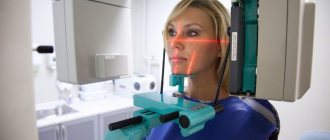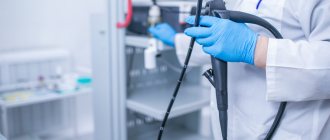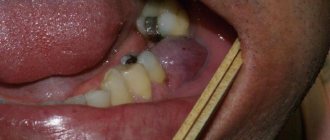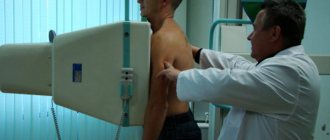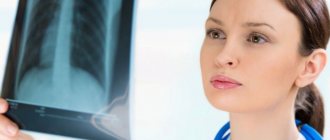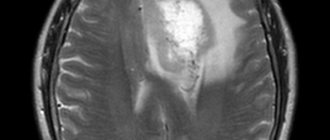27.02.2020
Most expectant mothers are faced with the need to treat their teeth during pregnancy. The growing baby takes everything from the pregnant woman for its development. In particular, it requires a lot of calcium to build its own skeletal system. If the diet contains few foods containing calcium, the fetus will “take” it from the pregnant woman’s body. This can lead to weakened tooth enamel and tooth decay.
Once upon a time, teeth were treated without x-ray examination and the quality of treatment was low. Radiography has taken dentistry to a new level. However, this examination is not safe during pregnancy. Most doctors avoid ordering dental x-rays during pregnancy due to possible adverse effects on the fetus. Therefore, the opinion of experts is divided into pros and cons.
What equipment is used to take an x-ray?
A visiograph is an electronic sensor that perceives x-ray radiation, transforms it into digital form and displays it on a computer screen. This is the most modern radiography system.
The first advantage of a visiograph is a very low radiation dose to the patient compared to a film one. As a result, radiation exposure is reduced to a negligible minimum.
Now the doctor can afford to take as many pictures of the patient at one time as necessary for quality treatment and diagnosis, without fear for the patient’s health.
Visiograph - an alternative to x-ray
A visiograph is a modern analogue of an x-ray machine. Its advantages:
- Allows you to take an image instantly, high-quality data is immediately displayed on your computer monitor.
- A narrow beam of rays is directed exclusively at the diseased tooth, does not affect adjacent tissues, and certainly cannot “touch” the abdomen.
- The duration of exposure (irradiation) is 10 times lower than when using old-style X-ray machines and is only 0.05–0.3 seconds. Radiation exposure is only 2 microsieverts (when using old devices - from 7 to 80 microsieverts).
For comparison, just sitting in front of the TV for three hours and enjoying your favorite series, a mother receives a radiation dose of 5 microsieverts. The safe radiation dose per year is 1,000 microsieverts (that’s 500 shots). Of course, you shouldn’t take the procedure lightly, but you shouldn’t panic and overestimate the danger to the baby either.
In what cases is it necessary to take dental x-rays?
X-rays should be taken for dental problems such as:
- the presence of foci of infection (chronic periodontitis, loss of bone tissue in the area of the apex (apex) of the root);
- presence of root fractures and cracks;
- pathological periodontal pocket;
- the presence of hidden pocket cavities;
- tooth structure with complex root canal anatomy.
When visiting a dentist in the first trimester of pregnancy, a woman must inform the doctor about this. In the first weeks of development, embryonic cells are in the stage of active division, so it is necessary to eliminate minor negative effects on the body.
Is it possible to give painkillers to pregnant women?
Dental anesthesia during pregnancy is not contraindicated; on the contrary, it helps reduce pain and stress, which negatively affect the condition of mother and baby.
Modern anesthetics based on articaine are absolutely safe during pregnancy, because:
- The drug is injected exclusively into the area of intended intervention, and its entire volume is distributed there.
- The drug does not enter the bloodstream and deep tissues, so its penetration through the placenta to the baby is impossible.
The newest drugs for pain relief also reduce the content of vasoconstrictor components. The child will not experience any discomfort or lack of nutrients during the mother’s treatment.
At what time is it permissible to take x-rays?
In modern dentistry abroad, and now in our country, the treatment and preventive direction - dentistry for pregnant women - is becoming increasingly relevant. This is explained by the peculiarities of the functioning of a woman’s body during pregnancy, which requires careful selection of medications and a special approach in choosing methods of dental care.
The most unfavorable time for dental x-ray examination in a pregnant woman is the first trimester, and especially the first two weeks of embryonic development. During this period, the formation of the most important organs and systems occurs. To eliminate the negative impact of radiation on actively dividing embryonic cells, it is better to refuse X-rays at this time.
The second trimester is more favorable for taking x-rays. Because at this time the likelihood of pathologies decreases tenfold.
During the third trimester there is also an increased risk of dental treatment having a negative impact on the pregnancy. The uterus is especially sensitive during this period than in the first weeks, but the risks of premature birth due to stress are undesirable.
How dangerous is x-ray?
In many cases, dental treatment is simply unthinkable without X-ray examination. When you can't do without it:
- when filling thin and curved tooth canals;
- to detect hidden carious cavities, caries under fillings;
- when the question arises whether wisdom teeth need to be removed (for example, if they are incorrectly positioned);
- to diagnose a tooth root fracture, cyst, determine the degree of inflammation of the tissues around the diseased tooth;
- when the issue of removing or restoring a tooth is being decided.
In the first three months, it is not advisable to take dental x-rays for pregnant women, since the fetus has not yet formed. Radiation can have an adverse effect on dividing cells, cause chromosome abnormalities and provoke intrauterine developmental defects. By the second trimester, at 16–20 weeks, the fetus is already fully formed - a tiny dose of radiation will not harm the baby in any way, so pictures can be taken without fear.
Dental X-rays during pregnancy are much safer than examinations of the pelvis or chest, because the mother’s belly is reliably protected by a lead apron, and dental examinations are always carried out using special devices with reduced radiation exposure. This applies to both old models and modern visiographs.
How is the imaging procedure performed?
Before the x-ray is taken, the woman must remove all metal jewelry. To protect from X-ray rays, the patient is wearing a lead apron that covers the shoulders, chest, and abdomen. The head and neck are also shielded. Such safety measures completely eliminate the impact of x-ray radiation on the fetus, on the woman’s reproductive organs, as well as other organs and systems.
When ordering an x-ray, specialists at the KIO STOM dental clinic evaluate each case individually from a professional point of view. In this case, the condition of the pregnant patient is taken into account.
Manufacturers of X-ray equipment claim that the resulting radiation cannot have any effect on the child, thereby declaring the complete safety of the procedure.
Removal and prosthetics of teeth
Tooth extraction during pregnancy is not prohibited, but the operation is performed only in cases of urgent need. Each case is considered by a doctor individually. To numb a tooth after extraction, only safe medications are used during pregnancy.
Removal of nerves in a tooth during pregnancy is carried out in case of deep caries, when the infection has already penetrated the root canal and affected the pulp; otherwise, they try to cure the nerve using conservative methods.
Prosthetics are possible, but also with limitations. It is possible to install crowns, but it is better to postpone the implantation of an artificial implant. This is due to the fact that:
- the implantation process is quite complicated and requires a lot of effort;
- in the postoperative period it is necessary to take strong painkillers and antibiotics, which are not safe for the child;
- During the period of bearing a child, there is a high risk of rejection of foreign material.
It is not only possible, but also necessary to treat teeth while carrying a child. Timely treatment will keep the mother healthy and prevent the possibility of infection of the fetus. Modern drugs and anesthetics, developed specifically for pregnant women, not only do not have a toxic effect, but also make the treatment as painless and comfortable as possible.
Before visiting the clinic, you can consult with friends who have undergone similar procedures, find out how teeth were treated during pregnancy, and which dentist. The experience of other people will help you cope with fear. When visiting a doctor, it is important to notify about your condition.
Alternative Methods
Today in dentistry there is no alternative to x-ray examination. In their quality, we can only consider various types of equipment of this type, which are represented on the medical equipment market by a wide range of assortments.
The best option is a digital visiograph , characterized by a minimum radiation dose for a single exposure. It allows you to immediately receive images and store them on digital media.
The only disadvantage of a visiograph is that it can only be used to take targeted images covering no more than 3 teeth.
© Dan Race/Fotolia
To obtain a three-dimensional image of one or both jaws, an orthopantomograph , which, with a small dose of radiation, produces high-quality digital images.
an apex locator is used as an alternative , allowing one to measure the length and condition of the dental canal. Exposure to x-rays is completely eliminated.
The device is used for intermediate diagnostics, which avoids additional X-ray exposure.
How is a panoramic dental photo taken and is it harmful?
What is a caries marker and how is it used?
What to do if a temporary filling falls out, see the link.
How much does dental treatment cost during pregnancy?
The PROFI-Dent clinic offers its patients the most affordable prices for all types of dental services, which is confirmed by our price list.
| Price list for dental | |
| Consultation with a dentist-therapist | FOR FREE |
| Treatment of caries | from 4,000 rubles |
| Treatment of pulpitis | from 6,500 – 13,000 rubles |
| Treatment of periodontitis | from 8,000 – 16,000 rubles |
| Application anesthesia | 100 rubles |
| Laser analgesia | 800 rubles |
| Injection anesthesia | from 500 rubles |
| Removing the seal | 200 rubles |
| Temporary filling | 250 rubles |
Prevention measures
Avoiding exposure to x-rays is possible only with timely detection of diseases and their prevention. The main preventive measures include the following:
- Attention to the quality of dental care .
It is necessary not only to follow the cleaning process, but also to choose the right products for oral hygiene. During pregnancy, dental and periodontal tissue become the most vulnerable, so additional cleaning products must be included for care. - Pregnancy planning should include complete oral hygiene.
- To avoid dental pathologies, you need to regularly conduct preventive examinations at the dentist .
As a rule, to maintain health, it is enough to visit the dentist 2 times a year. During pregnancy, a dental examination is routine and scheduled for the first trimester. If there are or periodically appear dental problems, then the woman should indicate them to the doctor for further diagnosis and treatment. - When planning a pregnancy, to make sure there are no dental problems, you can take an orthopantomogram of all teeth and heal those where there is the slightest suspicion of further development of caries.
- © Martinan / Fotolia
A woman needs to balance her diet so that it includes as many foods rich in vitamins and minerals as possible..
Vitamins help strengthen periodontal tissue, and minerals saturate tooth enamel, increasing its resistance to aggressive microorganisms.
Additionally, you should limit your consumption of foods with a lot of carbohydrates, as they promote the growth of bacteria.
The listed preventive measures are general. In order to get more detailed advice, the patient needs to visit a dentist, who will give detailed advice - see an example in the video:
How to reduce the risks when performing x-rays on a pregnant woman?
In order for the expectant mother to have complete confidence in her health and the health of her unborn baby, she must inform the doctor about the timing of her pregnancy. The doctor may decide, depending on the severity of the dental disease, to wait a little and take an x-ray in the next trimester or even postpone it until after the baby is born. That is, unless absolutely necessary, the doctor will never prescribe x-rays during pregnancy.
If, nevertheless, the doctor decided to send the woman for an x-ray, then it is better to undergo the procedure on a visiograph. A pregnant woman needs to check whether such equipment is available in the dental clinic. During the procedure, the abdomen must be protected with a special apron.
To avoid having to undergo an x-ray examination, if you experience any pain or inflammation in the oral cavity, you should immediately contact a dentist.
